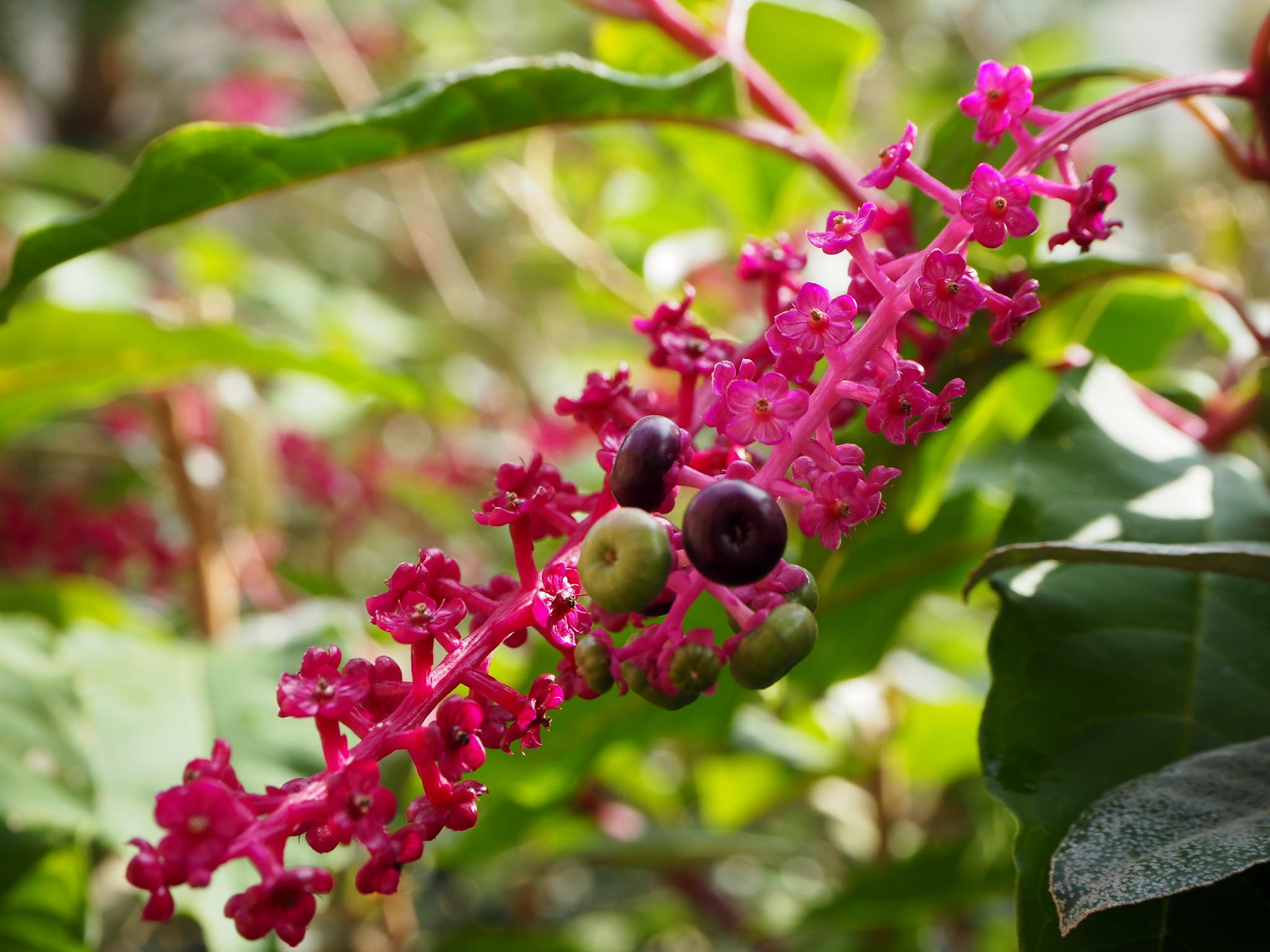

Image – Flickr / Teresa Grau Ros
The Phytolacca They are a very pretty genus of plants, perfect to have in large gardens or spacious patios, but also to grow in pots. They develop leaves of a magnificent green color, and in addition some species can be consumed after having treated them.
Its maintenance is not complicated, although it is true that it is very important to take into account the adult size that they reach to ensure that there is adequate space for them.
Origin and characteristics of the Phytolacca
Our protagonist is a genus of perennial plants native to North America, South America, East Asia and New Zealand. They grow as herbs or trees between 30 centimeters to 15 meters in height. Its stem is usually pink or red, and its leaves are simple, alternate and with a rough margin.
The flowers are greenish-white in color, and are grouped in hanging inflorescences that emerge from the branches. Once they are pollinated, the fruits begin to ripen, which are purple-blackish drupes.
All parts are toxic to mammalsas they contain phytolacatoxin and phytolacigenin, which are two toxic substances that can cause diarrhea, weakness, headache, spasms, seizures, low blood pressure, and even breathing difficulties. However, both the leaves and the drupes after boiling them 3 times separately are eaten, although this is not recommended as there is no guarantee that they are safe. In any case, the roots should never be eaten due to their high toxin content.
Main species
The best known are:
Phytolacca americana


Image – Wikimedia Commons / Tubifex
It is an evergreen shrub native to North America that reaches a height of about 4-5 meters. It blooms during the summer, producing white flowers, and bears fruit in the fall.
In its place of origin, indigenous tribes use it as a folk remedy, and in traditional Chinese medicine it is considered purgative, emetic, and a good heart stimulant.
Phytolacca decandra


Image – Wikimedia / Niccolò Caranti
It is a plant native to North America, China, southern Europe, Africa and the Azores Islands. Reaches a height of up to 3 meterswith a hollow annual cycle stem from which oval-lanceolate leaves sprout. The flowers are white or pink, and are grouped in racemose inflorescences. The fruits are drupes, red at the beginning and black at the end of ripening.
It has some other use: for example, the young stalks can be consumed as if they were asparagus; and as it has spermicidal properties, it can be used as a contraceptive under medical prescription.
Phytolacca dioica


Image – Flickr / Teresa Grau Ros
It’s about the acquaintance ombú or bellasombra, a species of native to the mountains of the Northeast of Argentina, Uruguay and the South of Brazil. It can reach a height of 10 to 15 metersbeing one of the largest phytolaks of its kind. Its trunk is thick, and its crown is quite dense, producing a pleasant shade. The flowers are white and appear grouped in clusters, and the fruits are yellowish.
Apart from being used as an ornamental plant in large gardens and sometimes as bonsai, its wood can be used to build shelters that will be very useful on very hot days.
What are the care you need?
If you dare to have a copy, we recommend taking care of it as follows:
Location
They are plants that they must be abroadin an area where they receive direct sunlight throughout the day. In the case that they are of large species, such as the P. dioicaIt is also important that they are planted as far as possible from pipes, paved floors, etc. At a minimum, there should be about ten meters between the tree and what you want to keep protected.
Earth
- Flower pot: fill with universal substrate (for sale here!) mixed with a little pearlite. Mulch works too.
- Garden: they grow in fertile soils, with very good drainage. They fear waterlogging, to the point that their roots can easily rot if the soil is not able to quickly drain the water.
Irrigation


Image – Flickr / Martin LaBar
Moderate. During the summer it will be necessary to water an average of 3 times a week, but the rest of the year 1-2 weekly waterings will suffice.
If in doubt, check the moisture in the soil before moistening it again, for example with a thin wooden stick.
Subscriber
It is highly recommended to pay the phytolaca during spring and summer with organic fertilizers such as guano or herbivorous animal manure, following the instructions specified on the package.
Multiplication
They multiply by seeds in spring. To do this, they must be sown in a seedbed (seedling trays, pots, milk or yogurt containers with a small hole in the base, …) filled with universal substrate. They have to be buried a little, so that they are not exposed to the sun, and then they have to be watered and placed outside, in semi-shade.
They will germinate throughout the season, although they usually do not take more than a month.
Rusticity
It depends on the species, but in general they resist cold and weak frosts. The ombú, which is one of the most popular, supports up to -7ºC.
What do you think of the Phytolacca?
